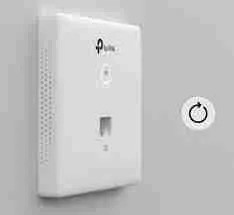Top 5 Inspection Techniques for Detecting Hull Damage
Ensuring the structural integrity of a ship’s Hull is crucial for its safety and performance. Ship hull damage can lead to costly repairs, operational delays, or catastrophic failures. Regular hull inspections, therefore, play a key role in proactive ship maintenance. Whether you’re a ship owner, a marine surveyor, or a boat enthusiast, understanding the best tools and techniques for detecting hull problems can save significant time, money, and headaches.
This guide will cover the top five inspection techniques for detecting hull damage, detailing what each method entails, its purpose, and when it should be applied. From simple visual inspections to advanced ultrasonic testing, we’ll equip you with the knowledge to identify common ship hull problems and prevent minor issues from escalating.
Importance of Hull Inspections
A ship’s Hull is its primary defence against the harsh marine environment. Constant exposure to saltwater, fluctuating temperatures, and physical forces from operations can weaken the Hull over time. Ignoring early signs of damage can compromise the ship’s safety and overall efficiency. Common ship hull problems include corrosion, fractures, and areas of structural stress.
Timely inspections help detect these issues before they worsen. Whether the vessel is a small or large boat, applying effective inspection techniques ensures compliance with marine safety standards, extends the asset’s lifespan, and enhances operational confidence.
Below, we’ve outlined the top five effective techniques for inspecting hull damage.
1. Visual Inspection
What is Visual Inspection?
Visual inspection is the most straightforward and cost-effective method of detecting hull damage. It involves closely observing the Hull for surface abnormalities, such as cracks, blisters, deformation, or corrosion.
What to Look For
During a visual inspection, surveyors and boat owners should look for:
- Cracks and fractures may appear around weld seams or areas subjected to high stress.
- Blistering or bubbling paint can indicate water ingress or trapped moisture beneath the surface.
- Corrosion or rust: Pay attention to areas below the waterline, as saltwater accelerates corrosion in metallic hulls.
- Deformation: Bulges or dents in the Hull’s shape could indicate areas under structural stress.
How to Perform a Visual Inspection:
- Clean the Hull thoroughly before inspection. Dirt or marine growth may conceal signs of damage.
- Inspect the external Hull and accessible internal areas, such as ballast tanks or compartments. Use adequate lighting for dark corners.
- Take high-resolution photographs of suspected areas for further analysis.
While visual inspection provides an accessible first line of defence against damage, it also has limitations. Some structural issues, like subsurface fractures or hidden corrosion, may not be visible to the naked eye. This is where advanced techniques become necessary.
2. Sounding
What is Sounding?
Sounding is an acoustic inspection technique to detect hull integrity issues like delamination (separation of layered materials in hull construction). It is beneficial for composite or wooden hulls. The method involves tapping the Hull with a mallet or similar tool to listen for sound variations that indicate internal voids or damage.
Key Indicators from Sounding:
- The solid and consistent sound suggests a structurally intact hull.
- A hollow or dull sound indicates possible areas of voids, lamination issues, or internal damage.
How to Use Sounding:
- Use a rubber or wooden mallet, which allows you to listen for resonant changes.
- Carefully tap across the Hull in a grid-like pattern.
- Document any irregularities in sound for further inspection or testing.
Sounding is an excellent, non-invasive, low-tech option for ship owners seeking to identify hidden issues. However, it should be combined with other methods for a more accurate assessment.
3. Dye Penetrant Testing
What is Dye Penetrant Testing?
Dye penetrant testing (DPT) is used to identify surface cracks or defects on metallic or non-porous surfaces. This method involves applying a liquid dye to the Hull’s surface and allowing it to seep into cracks. After removing excess dye, any remaining traces will reveal hairline cracks or flaws.
The Three-Step Process:
- Apply the Dye: A coloured or fluorescent liquid is sprayed or brushed on the cleaned hull surface.
- Remove the Excess Dye: Wipe away excess liquid to leave only the dye within surface imperfections.
- Examine Under UV Light: Ultraviolet light or a contrasting developer (powder) is commonly used to make the cracks more visible.
Benefits of Dye Penetrant Testing:
- Cost-effective and easy to apply.
- Highlights tiny cracks invisible to the naked eye.
- Applicable on various materials like steel or composites.
This technique is widely used during inspections of welded seams and areas prone to fractures due to fatigue. It is non-destructive, meaning it doesn’t harm the Hull during its application.
4. Ultrasonic Testing
What is Ultrasonic Testing?
Ultrasonic testing (UT) is an advanced, exact technique to measure hull thickness and detect structural flaws hidden beneath the surface. This method relies on ultrasonic waves that bounce back into the Hull, revealing material imperfections.
How it Works:
- A probe emits high-frequency ultrasonic waves into the Hull.
- These waves travel through the material and reflect off any inconsistencies, such as corrosion or voids.
- The returning echoes are analysed to determine the material thickness and identify hidden defects.
Applications of Ultrasonic Testing:
- Assessing steel hull plates for thinning due to corrosion.
- Detecting voids, flaws, or cracks in fibreglass or composite materials.
- Measuring overall hull strength to comply with regulatory requirements.
Ultrasonic testing requires specialised equipment and trained technicians. It provides unparalleled accuracy, making it the gold standard for detecting hidden hull errors in professional marine surveys.
5. Thermal Imaging
What is Thermal Imaging?
Thermal imaging uses infrared cameras to detect temperature variations on the Hull’s surface. Abnormal heat distribution can indicate problems such as water ingress, voids in insulation, or areas under structural stress.
Key Advantages:
- Non-Intrusive Inspection – The Hull doesn’t need to be dismantled or cleaned for thermal imaging to be practical.
- Real-Time Feedback – Surveyors can instantly observe heat patterns and identify causes for concern.
When to Use Thermal Imaging:
- Monitoring composite hulls for lamination irregularities.
- Inspecting insulation within steel hulls for thermal leaks.
- Detecting water ingress in fibreglass structures.
Though thermal imaging equipment can be expensive, its ability to non-invasively uncover subtle damage makes it an invaluable tool for serious marine professionals.
Maintaining a Proactive Approach to Hull Integrity
Detecting hull damage early is critical for maintaining safety, reducing costs, and extending the life span of any vessel. By regularly employing these inspection techniques—including visual inspections, sounding, dye penetrant testing, ultrasonic testing, and thermal imaging—shipowners can stay ahead of common ship hull problems and avoid unexpected repairs.
Routine inspections shouldn’t just be reactive but proactive. Create systems that ensure regular diagnostics, and when in doubt, consult an expert marine surveyor.
For more resources on ship hull errors and maintenance strategies, subscribe to our newsletter! Ensure your ships stay seaworthy and save on preventable maintenance costs.












